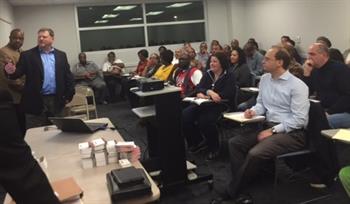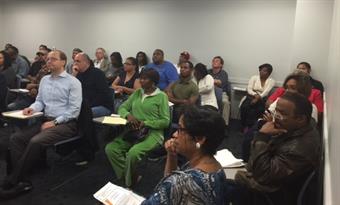Home Sweet Home Inventory
As you are making your list of things to do at the start of the year, don’t forget to include updating your home inventory. A home inventory is your master record of all your possessions in the event of a fire, theft or natural disaster. A current inventory of your belongings, and pictures, video or paperwork to back these up, will make it easier in the event that you need to file an insurance claim. Having a set time every year, such as the new year, spring cleaning or when you make major purchases, can make updating your inventory happen like clockwork.
A thorough and current inventory of your home’s contents and associated value will help you decide on coverage amounts and show you if there are any holes in your policies.
Some tips to keep your home inventory up to date are:
- Keep the bills, receipts, warranties and instruction manuals for your more valuable possessions – these can serve as proof of ownership.
- Review your home inventory every year and when you make new purchases. The value of your possessions will increase the more you acquire.
- Take photographs or video footage of all of your valuable possessions.
- Store records of credit cards, taxes, government and other important household documents in an off-site location.
Flooding: Know Your Coverage, Understand Your Risks
It goes without saying that the best time to review your flood insurance options is before a flood occurs. Without understanding your risk and insurance options, you might find yourself inadequately covered when you need coverage the most.
According to the National Flood Insurance Program (NFIP), floods are the number one natural disaster in the U.S. Just because you don’t live near a body of water doesn’t mean you’re safe from flooding. In fact, consumers outside of high-risk flood areas account for more than one in five flood insurance claims.
Flood Risks
Although anyone can sustain a loss from flooding, where you live will affect your risks. The NFIP helps communities understand their risk with flood maps. Risk levels are divided into three categories:
- High-risk areas have at least a one percent chance of flooding annually. All homeowners in these areas with mortgages from federally regulated or insured lenders are required to buy flood insurance.
- Moderate-to-low-risk areas have less chance of flooding annually, but the possibility is not completely removed. Flood insurance in these areas is not required, but it is recommended.
- Undetermined-risk areas are where flood-hazard analysis has not been conducted, but a flood risk still exists.
The standard flood insurance policy covers direct physical damage to your insured property up to the replacement cost or actual cash value of damages, or the policy limit of liability, whichever is less. It covers structural damage, including damage to the furnace, water heater, air conditioner, flooring and debris clean-up. However, coverage for basements, crawlspaces and ground-level enclosures on elevated homes is limited. The contents of your home are not covered under a standard flood insurance policy.
Are You Covered?
Generally, homeowners insurance does not offer protection against flood losses. You should check your policy’s exclusions or contact your agent or insurer to find out more about what your policy currently covers.
Flood insurance is available through the NFIP. It may be purchased through licensed property and casualty insurance agents or through private insurance companies. Typically, there’s a 30-day waiting period before a policy goes into effect. Visit the NFIP’s website for more information.
What to do After a Flood
- Contact your insurance agent or insurer. They will probably advise you to mitigate your damage as soon as possible.
- Prevent mold by removing wet items.
- Take photos of floodwater in your home and of any damaged property.
- Make a list of damaged or lost items including the date you purchased them and their value.
- Beware of fraudulent schemes.
- Get more than one bid from contractors and request at least three references.
- Ask for proof of licenses, permits and insurance.
For more tips on what to do after a flood, click here.
How to Become a Licensed Claims Adjuster
On December 9, 2015, the Louisiana Department of Insurance (LDI) Division of Diversity & Opportunity hosted a seminar to inform interested individuals on how to become a licensed claims adjuster. The event was held on the campus of Southern University at New Orleans and featured topics on the requirements and examination process for becoming a claims adjuster as well as tips on marketing an adjuster’s services.
Below are a few pictures from the event.


The Division of Diversity & Opportunity will host its next seminar on becoming a licensed claims adjuster on January 16 at Southern University – Baton Rouge. The seminar is free and open to the public, however space is limited. To register, contact the Louisiana Small Business Development Center (LSDBC) at (225) 774-9213 or online at www.lsbdc.org.
Click here for more information on the upcoming seminar.
Stay Connected with the LDI
Keep up with tips and news from the LDI, including newsletters, press releases and videos, by connecting with us through social media.